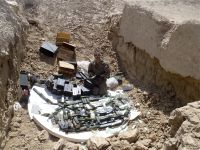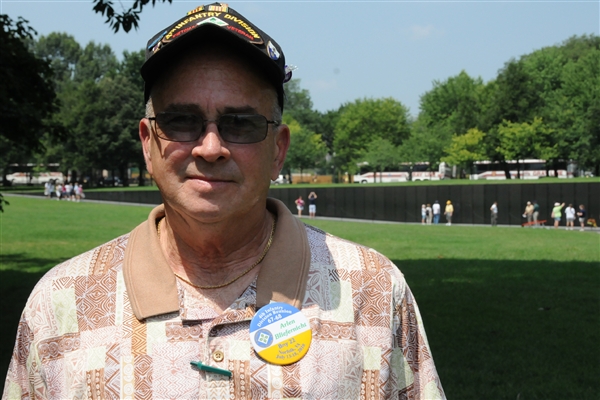CAMP MARMAL, Afghanistan — Leading one of the most dangerous units in northern Afghanistan typically includes a heavy burden of responsibility for its company commander.
Navy Lt. Eric R. Bond, a 2007 graduate of the U.S. Naval Academy, understands this better than most as the officer in charge of the Combined Joint Task Force Explosive Ordnance Disposal unit based in Camp Shaheen. Bond, an Ashburn, Va., native, is responsible for the safety and readiness of his special forces team, which is trained and equipped to take on life or death missions in a multitude of tactical environments, such as onboard ships, underwater, and in urban areas, minefields and battlefields.
As if this was not enough, Bond decided to take on the additional responsibility of training Afghan security forces so they can properly dispose of explosives after the U.S. military leaves Afghanistan.
“Our direct task is to defeat the [improvised explosive device] threat,” he said. “But it became clear to me that if we intended to leave responsibly, we needed to do partnerships. One of my major initiatives is to partner any time we could with the Afghans.”
To facilitate collaborative efforts with the Afghan National Army, Bond needed the support of a top-level Afghan leader. This led him to Capt. Islamudin Behaddu, who is tasked to lead Afghanistan’s EOD unit.
“The first thing I did is foster a relationship with Captain Behaddu,” Bond said. “As the appointed team leader, he had not gone through the training himself. But he completed the training … and graduated. He earned the respect of his EOD team by completing the same training they did.”
Bond also worked to form partnerships with EOD teams from other International Security Assistance Forces, such as Germany, Sweden, Norway, Finland, Netherlands and Latvia. However, these ISAF countries focus more on removing the IED threats that are littered across Afghanistan due to many years of war.
“It just made sense to me to establish partnerships,” he said.
The CJTF Paladin EOD unit, based out of Camp Shaheen, southwest of the city of Mazar‑e Sharif, includes six teams with three EOD technicians. It serves as the only IED/EOD school for Afghan National Security Forces in the country.
“We have trained and validated four Afghan National Army EOD teams that can now go out on their own,” Bond said. “Before they were rag-tag groups, but now they have come back with dozens of success stories.”
Bond’s six-month tour in Afghanistan comes to an end in mid-January, and the former midshipman with a bachelor’s degree in oceanography is set to return to his EOD Mobile Unit 1 at San Diego’s Naval Amphibious Base Coronado. He said he’s proud that his unit of 20 sailors, which also includes two support personnel, has maintained their safety and that of the northern region of Afghanistan. He’s equally proud that he can leave the war-torn country knowing that trained Afghan EOD teams will use the knowledge and skills he taught them to protect their population long after he is gone.
“Their EOD teams have exceeded all our expectations,” Bond said.” It’s unbelievable what they can do now on their own. Once we are gone, they can handle it by themselves.”
Source:
U.S. Department of Defense
Office of the Assistant Secretary of Defense (Public Affairs)

 von
von 
